by Kathy Smith
Kathy Smith: Julie, welcome to the show.
Julie Reil: Thank you, Kathy. Thank you for just having a heart for education for women. Because every woman out there eventually does have to think and address some issues that happen with aging and the pelvic floor. I think every time we have an opportunity to discuss this is a natural part of aging and that there are some things you can be proactive with, I think it’s just another step forward for us.
Kathy Smith: Let’s just dive in. What prompted your interest in this particular part of a woman’s body? Had you seen, have you been told, do people come in? When I was visiting you in Montana–and by the way we had a lovely visit. It’s been a while now. Maybe a couple of years ago. It was just so much fun to spend time with you in Montana and to see you in your clinic and to hear some of the stories about how women’s lives, even though sometimes we think about it as just the sexual part of our bodies, so many other things are going on down there. As it ages, it really can cause problems. What prompted your interest?
Julie Reil: My board certifications are in family medicine and also in obstetrics. So, delivering babies for 10 years, of course, firsthand you’re seeing women through the process of childbirth which is probably the number one way that the pelvic floor loses tone of course. Then, also seeing women in their maturing years and helping them through menopause, which is the second basically insult or hit against the body in the pelvic floor area.
So, childbirth is easy to understand because the area stretches. You don’t get complete rebound. Sometimes there’s extensive tearing in other extenuating circumstances. Menopause is kind of a little-known facts, so whether you’ve had babies or not, once your body is no longer making its own estrogen and you’re officially menopause, you now have 50% less thickness and tone of your entire pelvic floor. That entire hammock of muscles is thin as well as the connective tissue and skin thins out.
So, your aging scenario going into your golden years is really quite tenuous. So, you’re at a lot of risk for not just urinary incontinence but loss of vaginal wall tone, loss of anal and rectal tone so that is responsible for holding gas and stool and, then the fourth function of the pelvic floor is low back pain and posture. So, all of those actually are important for just everyday life.
Kathy Smith: Give us a little anatomy lesson when we’re talking about the pelvic floor.
Julie Reil: It’s very much like a hammock. The front of the hammock is your pubic bone. The back of the hammock is your tailbone. So, in between there is some side attachments to the pelvic wall to your sitz bones and the very center of your hammock is basically that perineal body or the muscle that either is torn or gets cut. But it’s compromised no matter what when you give birth naturally. So, the very center of your hammock of that nice group of muscles that are anchored is already sitting lower and has less support after just one baby – one natural birth.
So, ultimately, toning those muscles, toning the side wall supports and all the anchoring structures of that entire hammock becomes our goal. So, how do we basically keep those muscles in shape? How do we get them back in shape, for instance, after you have a childbirth?
Kathy Smith: Of course, we’re taught at every Lamaze class, every Bradly Cat class that you go to and every workout that you go to now about Kegels. Talk to me about – because I know you have a point of view on Kegels and how to do them and their efficacy.
Julie Reil: Again, Kegels can be helpful, but they’re not always helpful. First of all, if you have urge incontinence, which means you’re getting up in the middle of the night to use the bathroom or all day long you’re going back and forth to the bathroom, so you have urgent or frequent urges, Kegels can make that worse.
So, you have to know that Kegels are specifically for people that are having more trouble with leaking urine when they sneeze or cough or do exercise. That’s called stress incontinence, which means basically the seal isn’t as tight as it used to be and you can leak and pressure can overcome that.
Kegels can be helpful, so really you need to be directed towards the right exercise for you. Then, there’s been some advancements of Kegels which are basically some very basic exercises put together by Dr. Arnold Kegel in 1961.
Now, there’s a program called Beyond Kegels. There are some other things out there that are basically optimizing the things that you know about, Kathy which is what types of muscles are we working on? Are these big muscles? Are these tiny, intrinsic muscles? Yes, they’re tiny muscles. Are they slow twitch? Are they fast twitch? Yes, they’re a little bit of both.
So, the more advanced toning programs are really helping people to optimize their position, optimize the way they do their exercises to get the most out of them. Then, also, educating women that this is not like working out in the gym. These muscles are very unique and basically when people say, ‘I’ve tried Kegels. It didn’t work.’ Most likely, they haven’t tried something that’s tailored for them, because most everybody thinks a simple Kegel is just squeeze those muscles and you’re out of there. But there’s a lot more that needs to go on in order to effectively tone your pelvic floor.
Kathy Smith: Let’s talk about it and maybe we can give the listeners one thing to try, because typically you’re told if you want to understand a Kegel, try when you’re urinating, stopping the flow of urine and those muscles that you’re using to do that are the ones you’re trying to tighten.
Julie Reil: Yes, it’s similar to that, but we don’t recommend you do them during urination. But, yes, you’re right, those are the same muscles that will stop the flow of urine.
Kathy Smith: I know that when I was doing my Moving Through Menopause book and video, I taught different exercises like the flutter or the elevator exercise where you would imagine that you’re in an elevator and if you imagine your vagina and going up the wall, it would be first floor, second floor, third floor. You get to the penthouse, you hold and then release one at a time.
Another one is that you just, instead of long squeezes, it would be almost like flutter kicks like squeeze, release, squeeze, release. So, things like that. But what’s interesting when we were together and you were showing me some of the postures, maybe just explain the one of where you lift your hips up and perhaps place them on a pillow or place them in a position so you change the position of your lower body. Explain why that’s effective.
Julie Reil: Ultimately, who needs Kegels the most, really, are women who had a baby. Those muscles are no longer nice and tight. They don’t communicate and they’re not as effective as they used to be, so you’re trying to accomplish some toning of muscles, but you’re challenged because you’re not starting off with the ideal that you used to have before having babies is those muscles are a little bit stretched apart, almost like fabric that is no longer completely in tone.
So, what’s interesting is people who need the Kegels also have typically given birth vaginally, so sitting up and doing a Kegel or sitting at a stop sign and saying, ‘Oh, every time I stop in my car, I just do my Kegels.’ First and foremost, this is not the position to do them in because everything sits lower in the abdomen and the pelvis once you’ve given birth even once. So, you want to be in a neutral, laying down position. Ideally, if there’s something you can prop under your lower back, that elevates the hips a little bit, now, you even have less gravity working against you.
So, sitting up, no. Laying down, better. That’s kind of a neutral. But, then, a little bit of a prop underneath the lower back where the hips kind of almost curve forward. I don’t know what you call that but if you were just doing a little bit of a flexing of the hips forward that is a very nice position because, now, you’ll eliminate gravity and even save tissues that are sitting lower, and you can really work through those full range of motion of what you’re trying to accomplish with your pelvic floor. That’s one position.
Kathy Smith: Ok. Did you have another one you wanted to share?
Julie Reil: I was going to say if you were to do one thing besides that position, it would be to do a combination like you mentioned, Kathy, of kind of a long-held isometric, like I’m going to pretend there’s a marble in the vagina. I’m going to squeeze around that marble and I’m going to pull it up towards my belly button and I hold, hold, hold. Count slowly to five and hold it. I call that more of an isometric, like a long-held contraction. Then, rest and do the same thing but do what you mentioned – the flutters – where you lift the marble up, you let it go, you lift the marble up, you let it go.
So, for most people that have tried to do Kegels in the past, they usually do them in one way. And I think most people do it in kind of a long-held fashion. I’m not sure. But when they do the combination which, then, is allowing you to work both the slow twitch and the fast twitch muscles down there, which are basically there’s 40% of one and 60% of the other – almost half and half – you’re going to be toning the muscles more effectively and getting more out of your exercises if you do that combo.
Kathy Smith: I love those combos…and you’re right, it’s so important to switch up your kegel exercisses to work both the fast twitch and slow twitch muscles! Just like any other muscle in the body, the PC (pubococcygius) muscle, which is the muscle you work while kegeling, needs regular exercise to remain firm. And having a strong pelvic floor is extremely important because when done correctly, “Kegeling” can alleviate up to 90 percent of stress incontinence. And of course, it’s going to heighten pleasure and sensitivity during intercourse! What are some other ways women can be proactive about keeping their pelvic floor strong?
Julie Reil: It certainly wouldn’t hurt. Exactly. First and foremost, you’ve got your four functions of your pelvic floor. So, urination and having bowel movements or stooling, that’s a necessary part of life every day. And it also has issues of dignity. So, that’s so important that we, as we’re aging and living longer, that we maintain and be able to have the pelvic health that we can. Because it does affect your cardiovascular fitness and activities you do, for instance. So, if you can keep those muscles strong and not be someone who’s leaking urine or unable to control gas or stool, which happens as people get into their 60s and beyond, that’s really important.
But vaginal wall tone becomes quite important, not only structurally so that you’re not having things sagging and falling out and that discomfort, but to be able to basically enjoy sex more and, then, be able to, I guess, be a little bit more proactive too, because this is an area where if you use it and continue to be able to use it, even through the drying, aging scenario for a pelvic floor is that you have less thickness of the skin. You also have less moisture.
So, that’s a little bit of the flower that withers away and dries up. So, you have to be proactive to make sure your flower doesn’t wither away and dry up. There’s some things you can do medically, but the tone is probably the cornerstone of it all. Then, using some other strategies to keep things – the mucus glands active and working. So, you had said once, I think, in a question, ‘Is this an area where if you don’t use it, you will lose it?’ There is some truth to that. This is ideally an area where you need to continue to use it, which becomes a challenge when you don’t have a partner. But there are ways that you can keep the area working and keep it from thinning so dramatically.
Kathy Smith: Exactly…if you don’t use it, you lose it! But if you don’t have a partner, you don’t have to feel left out! There’s all kinds of techniques that will help you everything stay active and toned…including vibrators. It’s nothing to be ashamed of…One out of every three people that go into nursing facilities go in because of incontinence. At one point, if you cannot maintain and hold your urine and your bowels, then life becomes very difficult and it’s not just something that happens in very old age. Women in their 30s start to leak when they jumprope or jog. And a lot of women suffer in silence. It affects their relationships, their self esteem, their sex lives. It’s an important thing to address. So, that’s why it’s never too early to start being proactive.
Julie Reil: Absolutely. And, again, so in the last 10 years, it’s a thrill to know that I think because of our wonderful, younger generation – these millenniums – they will talk about things. They’re taking the taboo out of a lot of subjects, and women in their 50s, 60s, 70s, 80s, 90s–I treat women in their 90s–they’re realizing they’re not alone. This is actually a fairly normal part of giving birth as well as aging and they can be proactive.
It’s a very personal subject. It involves matters of dignity, truly. But to empower women to realize, well, there really are some things you can do. It may not be in your mainstream medical doctor’s office yet, but there’s some treatments and there’s combining exercises with, say, bioidentical estrogen cream, used very conservatively. There’s a lot of things where if you do the stuff over the long run, if you started in your 40s, 50s, continue on, your preservation of your pelvic floor and its function will be so much better, of course, than if you just let things go.
Kathy Smith: Yeah, optimizing that.
Julie Reil: These young women are saying, ‘Tell me what to do.’ It’s important to them. They don’t want to lose their, let’s say, sexual abilities, their attractiveness but, also, their functional issues and their dignity. They’re looking around, going, ‘Whoa, that could happen to me.’
I love the fact that people are becoming proactive, and I love that fact that 90-year olds come in. Ninety-year olds are interested in not getting up and down and peeing all night, not having leaking but more than that, they want to feel as young and beautiful down there as they do anywhere else in their body.
Kathy Smith: Yeah, it makes so much sense.
Julie Reil: Yes, it’s beautiful.
Kathy Smith: And it turns out that engaging in intercourse and other sexual activities that stretch the vagina can actually preserve elasticity by preventing contracting and over-tightening of the tissue in the area. But yet, around 50-60% of women report problems with vaginal dryness. What’s happening in a woman’s body and hormone levels that cause this dryness, and how can we prevent that atrophy…especially during or after menopause?
Julie Reil: Naturally, in terms of vaginal dryness, what’s happening structurally, physiologically is your pelvic floor is very dependent upon estrogen. When you no longer make your own estrogen and, say, you are officially in menopause, which means you haven’t had a period for 12 months, you are basically already – because of the lack of estrogen influence on those tissues – at least 50 percent thinner than when you were having your menstrual cycle. So, that means the skin, the connective tissue in the muscle are all thinning out. They’re becoming weaker. So, estrogen naturally supports the thickness, the turgor and the elasticity. So, it’s a big deal when you go into menopause.
If you take systemic hormone replacement, there’s some improvement, but typically people will still have atrophy and they will still have vaginal dryness as well as some difficulty with the stretch of intercourse. That might be felt during intercourse or what we call afterburn. It seems like it’s going fine but, then, when you’re all done, it’s really uncomfortable because those tissues did not stretch well.
Your strategies really do come down, ideally, ultimately that if you can replace a little bit of that estrogen topically. One of the best things that happened for women, in my opinion, in 2010, the American College of Oncologists, the cancer doctors, issued a position statement reassuring women that use of an estrogen cream on your pelvic floor, on your vaginal walls is not putting you at risk of systemic cancers and long-term risk of heart disease and stroke and things that we know that come from taking systemic hormones over the long term.
There’s a couple of reasons for that. First of all, you don’t need much in terms of the dose. Second of all, you only dose it three times a week and it’s typically just a little wheel of cream. I have my patients just rub it in like you would a lotion. Interestingly is, that little bit makes a huge difference to preserve some thickness, some elasticity and how to guard against the ultimate withering away and drying up of the flower. You want to preserve the thickness and the blood supply and the stretchability of that area. So, estrogen is your number one thing.
So, is there natural forms of estrogen? Personally, I like to prescribe Estriol, which is compounded. It has to be prescribed, but it is 100% bioidentical to what’s in the human body. It’s only one subtype of estrogen, but it’s about 85% specific for the pelvic floor. So, you don’t have people talking about breast tenderness, a kind of systemic effect of the hormone, because it’s really just being used three times a week, about 1 ML, which is a small dosing. It takes care topically, or locally, what you need, but it’s not going throughout your whole system. Does that make sense?
Kathy Smith: It does. Totally. With the product, then, it’s going to help with dryness, with thickness and a little bit of the elasticity and the shape?
Julie Reil: The tissues that are essentially estrogen dependent, we’re talking the entire hammock of your pelvic floor is skin-connected tissue, and those fine intrinsic muscles all respond a little bit to that estrogen. So, it’s not just like the very surface of the skin becomes less wrinkly. No, it’s actually giving a small, functional improvement.
It doesn’t suddenly make you re-toned, but we’re talking about the marathon, not the sprint here. So, if you go into menopause – on average 50, 55 – and you’re going to live another 45, 50 years, you’ve got a lot of years where you really want to prevent, which would be the ultimate–which is kind of the withering away of those tissues. When I examine women in their elder years who haven’t had any estrogen, it’s as thin as wet tissue paper. So, you’re talking about an area that really becomes somewhat non-functional.
Kathy Smith: Because it can tear so easily.
Julie Reil: Yeah, with hardly any pressure. Imagine sitting in a wet pad, then, having that pliable, fragile tissue. It really behooves us to just become aware of how we can use every possible strategy to make this area preserved and maintained as well as possible.
Kathy Smith: Right. And also, it’s interesting to note that when estrogen leaves the body, so does important bacteria that lives in the vagina. This changes the pH, and makes the area more acidic and vulnerable to infection. Because of this, combined with the loss of elasticity, little tiny tears form making the vagina more susceptible to infections. And not the infections of the yeast infections we used to get when we were younger but more so, even more bacterial infections.
Julie Reil: Absolutely. And bladder infections, for sure.
Kathy Smith: And bladder infections. So, yeah, it really is something to pay attention to. Well, then, for one of the things that–I know in your introduction, I talked about it–but it’s a procedure called Genityte. I know it’s a procedure that helps with the pelvic floor. It helps with all the things we’re talking about.
Can you talk a little bit – because I know these things are popping up across the country and there’s different claims that are being made for different procedures – can you talk about Genityte? But, also, just in a broader view of a lot of claims that are being made for products out there of how they can tighten, shift, change and which ones work and which ones don’t.
Julie Reil: Ok, well, good. Essentially, what is out there are different, let’s say, machines or mechanical ways to potentially add a little more tone to the vaginal walls. CO2 laser can be used, radio frequency, electricity. I don’t think ultrasound’s been used successfully.
What I use in a Genityte procedure is infrared light. It’s light, not heat and it’s a very gentle approach. Because it can go directly in and around the clitoris, the anus, very, very sensitive, highly innervated areas, we’re able to accomplish toning of the entire pelvic floor – pubic bone all the way back to the tailbone and everything in between including the vaginal walls. What I love about Genityte is the four functions of the pelvic floor – urination, having babies, the vaginal wall tone which is our sexual function too, having bowel movements or passing gas and stooling as well as lower back pain and posture are all improved. Therefore, the ability to Kegel, to use those muscles and to return better structural tone by exercising them, all that, then, becomes possible.
Other than that, the things that are out there are using pretty intense heat or electricity or radio frequency, that can only be used in the vaginal walls where you don’t have a lot of nerve supply; otherwise, you would literally damage nerves to the clitoris or to the anus in which people would never tolerate and, certainly, we can’t risk.
I think the best of the best things out there because Genityte was something developed right here where I practice myself. The other things have kind of just come as a little bit of a spinoff, if you will. I think the best things that can be accomplished, you just have to work one on one with your physician in terms of what’s safe for you. What you don’t want to risk, of course, with any of those thing is that something might get worse.
There is a difference between urgent incontinence and there’s a difference between stress incontinence and, then, there’s a difference between vaginal wall prolapse. The person doing the procedure needs to be a physician, and they need to know how to actively diagnose and, then, steer you in the right direction.
There are some home product, which you might be referring to as well. There’s something now that can help you, let’s say, optimize your Kegeling ability and it connects to your iPhone. I think it costs only about $150. It’s essentially a biofeedback device. It’s used by the physical therapists, and it can give you feedback as to how well you’re squeezing those muscles. I think that’s kind of exciting. It’s something you can actively do along with your Kegeling program at home and give you a sense of are you making strides, are the muscles getting stronger, are you registering, on your biofeedback scale, a higher score?
Kathy Smith: Is that called a dilator? Just for the audience, what would they look for? I’ve read about them. I’m actually going to order one. That’s a great idea. I read about them.
Julie Reil: They came out in Europe first, but I know the physician in Vancouver has been using it, meaning recommending it to patients and feeling like it’s a little bit of a step up. Certainly, it’s affordable, which is nice. The other units I’ve seen that are available to order off the internet in the U.S. look more like a vibrator. You insert it. But they’re a little bit bulky and, then, they don’t have the blue tooth. So, what I like about the one he was talking about–I think it’s called eFIT or something. I’m going to look it up and see if I can find it on my phone.
Kathy Smith: We’ll track it down and we’ll put it in the liner notes here.
Julie Reil: Yes, because of the affordability, first of all, I think that’s amazing. And, then, the fact that most everybody has an iPhone now or some kind of a blue tooth device, so it just seems like it would be easy to use and, then, have some immediate feedback as to how you’re doing.
Kathy Smith: So, I guess the message is start with a program to strengthen the pelvic floor, to strengthen the muscles of the vaginal wall. Think about the dryness element of where you are on the spectrum and whether you need a little bit of estrogen cream. You might also try vaginal moisturizers, which are called “face cream” for the vagina. They work by binding vaginal cells and holding water.
Then, if things are to the point where you’re finding you’re embarrassed because you can’t hold your urine or your bowels, then the idea is instead of just going out and getting the Depends or getting a pad or something to stop the leakage – or to not even stop it but to catch the leakage – the idea is to now start to go to a doctor, to perhaps go to even your website, which is ShilohMedicalClinic.com or subscribe to Women’s Voices Magazine, and start to get more information about what are some of these techniques that you can do now to really help with the strengthening of this area. Because it’s a fascinating brave new world, and I encourage everybody to listen up, not be embarrassed about it and perhaps start the dialogue with your girlfriends or even with yourself or with your doctor.
Julie Reil: Right.
Kathy Smith: Any last parting words before I have to let you go?
Julie Reil: No. Once again, Kathy, I just applaud you because you are so proactive for women. You’re broaching topics here, I think, everybody needs to hear about. But the common denominator is these are really embarrassing topics, and I think people are often not reaching out for the help they need because of the embarrassment. So, everything that we can do to encourage each other as women and let them know there are other things.
Doctors like myself, I’m nothing wonderful but I certainly have a heart for women. Because of my women’s health category, I’m just one of many out there who are trying to make life better. I just want to thank you again for what you do for women. I think just continuing to be a resource for women as to what’s coming out, what’s coming down the pike. I think there’s a lot of interesting things out there and everything has to be taken with a grain of salt. I think looking at things critically, talking with your doctor, making sure things are safe, number one. Then, beyond that, just being proactive for yourself and your own health is what it’s all about these days.
Kathy Smith: So well put. On another note or just to add to that, I would love to track down the Kegel exercises you’ve mentioned. We’ll also put all those in the liner notes just so people know where they have access to find these newer techniques.
Julie Reil: Absolutely. The website that you can research is called PhoenixCoreSolutions.com. This is a physical therapist from Missoula, Montana who did this research a good 30 years ago. A very successful program called Beyond Kegels and little things like the wedge to prop under your lower back is all available on here site and the books and what not. She is an interesting woman who basically has done very well as a physical therapist and she said, “In my younger years, I said I’m going to make a million dollars.” Well, then, after she made a million dollars, her next goal was to help a million women.
That’s what Beyond Kegels has been about. It has been just kind of her giving back to women. I think it’s the best program out there and the easiest to do. She has research to back it up and I would say have hundreds of patients to also credential that it’s something that is realistic, you can do it at home, it works and it can fit into anybody’s everyday life. And you only do it three times a week, which is another helpful thing, so it’s not laborious to do this.
Kathy Smith: It sounds like a remarkable woman. Once again, it’s great. I’m going to have to fly out to Montana. I need a Dr. Reil fix, so I’ll have to come see you. Thank you so much.
Kathy Smith, New York Times bestselling author, has stood at the forefront of the fitness and health industries for over 30 years. The numbers speak for themselves: Kathy has sold more than 20 million exercise DVDs - landing her in the Video Hall of Fame - and $500 million in Kathy Smith products. With her revolutionary approach to fitness, Smith has touched millions of people, inspiring them to move, live, and love.

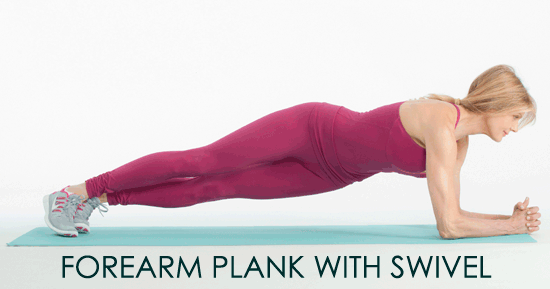
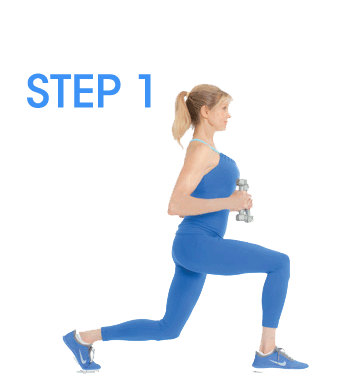
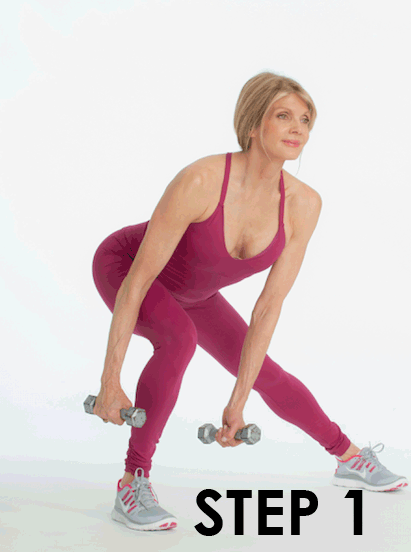
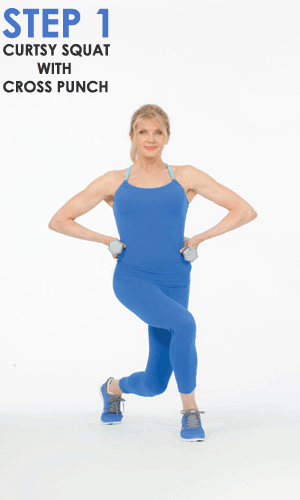
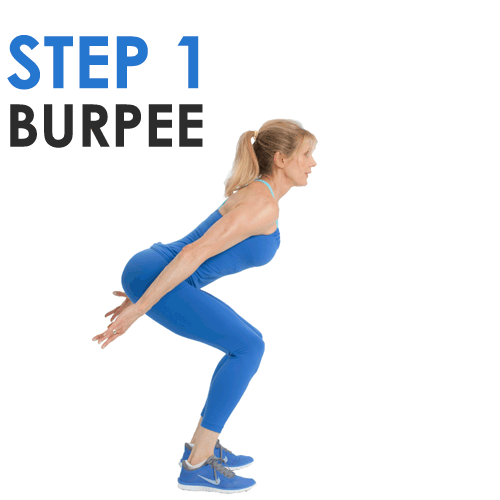
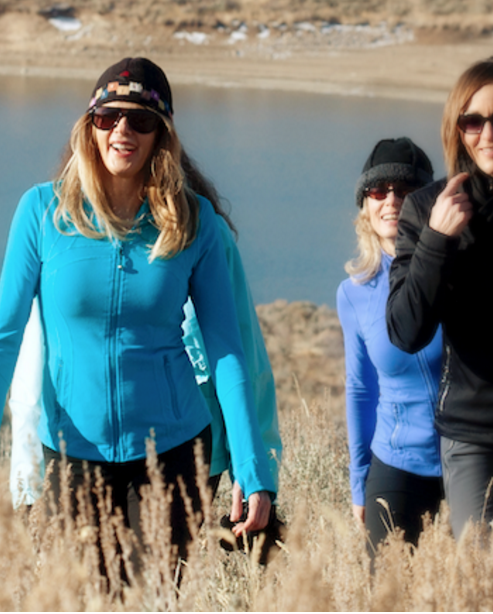
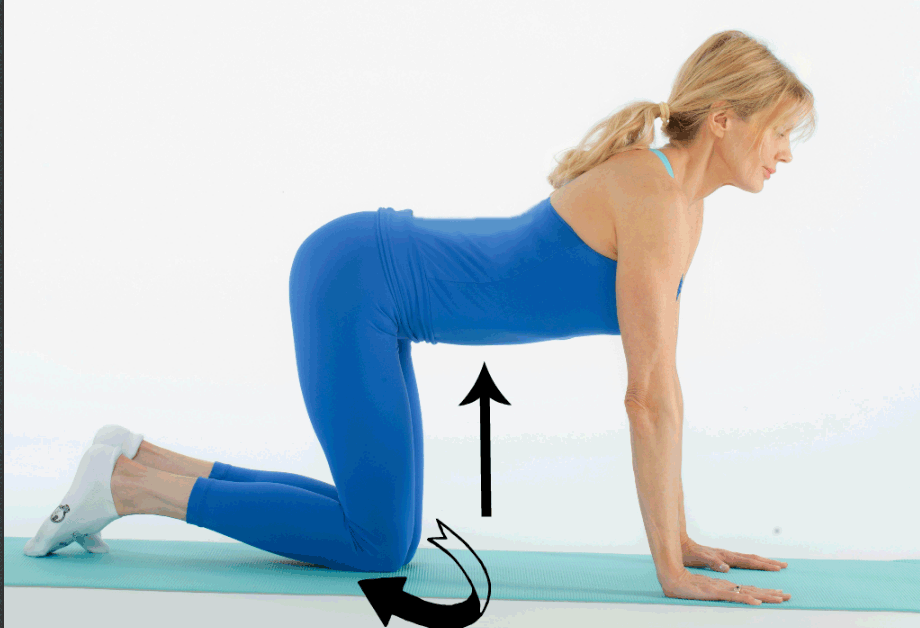
 This trick helps strengthen your transverse abdominis, the abdominal muscle that I call your “built in spanx.”
This trick helps strengthen your transverse abdominis, the abdominal muscle that I call your “built in spanx.”



